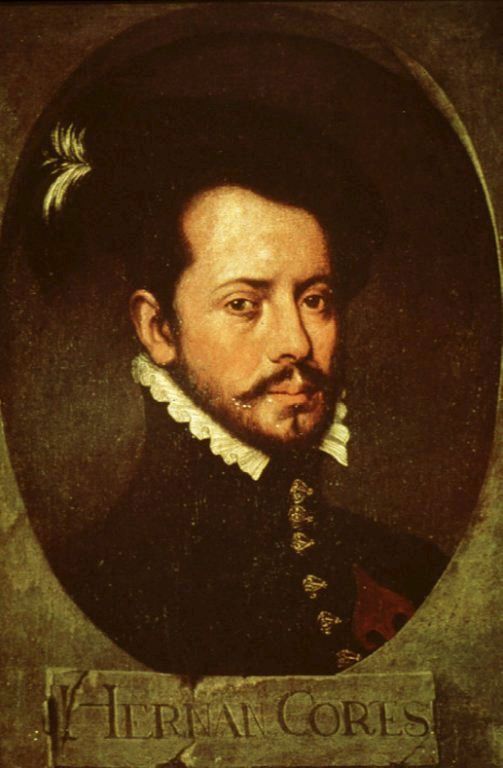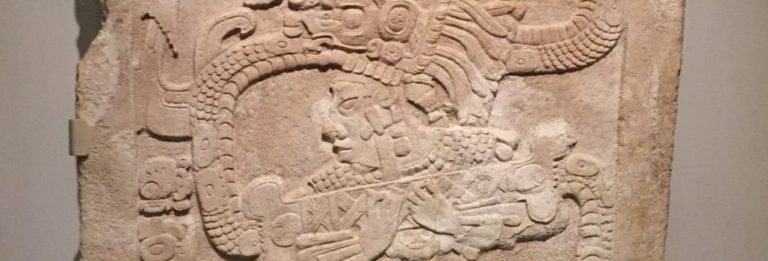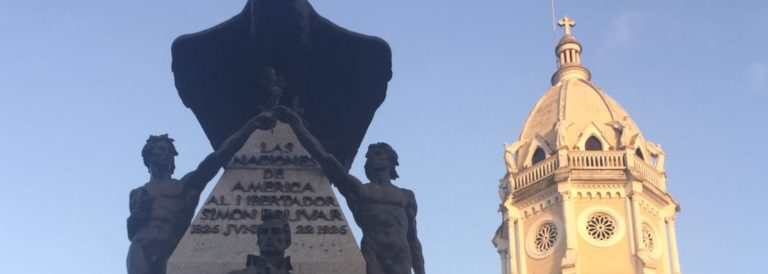Jared Diamond’s magnum opus, Guns, Germs, and Steel: The Fates of Human Societies is a must-read for cruisers headed to Latin America. In it, he explains how combat technologies, livestock microbes, and higher education contributed to the rise of some civilizations at the specific expense of other less accessorized societies.
In the cases of Mesoamerica and Peru, he might as easily have titled his book, “Luck, Pluck, and Treachery”. These were certainly essential elements of the story, as well. Heavy on the Treachery!

In 1492, Columbus sailed the ocean blue (pluck), and bumped into the Bahamas while looking for India (luck). In an interesting digression, there is recent scholarship suggesting that Columbus was a Jew looking for a new homeland for the Spanish Jews being castigated by Arch-Catholic Ferdinand and Isabella’s Inquisition (royal treachery). Christopher Columbus’s Jewish Roots Then, again, some scholars think this intensely Christian believer was looking to liberate Jerusalem. Columbus and the Quest for Jerusalem: How Religion Drove the Voyages that Led to America
Clearly, this was a complicated man in complex times.
In what has to be one of history’s most egregious instances of arrogance, Chris waded ashore, stuck his flag in the sand and claimed the new world for Spain (pluck of the highest degree). What if it had really been China or India? They would have swatted him like a fly (luck). Instead, he went back to Spain claiming the rivers were filled with gold (treachery). During the course of his four voyages, Columbus lied to his crew, his king and queen, and his creditors. He even went so far as to kidnap slaves to take back to Spain in a desperate attempt to get a financial return for his sponsors (dastardly treachery). Columbus: The Four Voyages, 1492-1504 Apparently, he was only setting a low bar for what followed.
As early as 1452 CE, the Portuguese had managed to get the Pope to grant them the right to enslave any pagans they could not convert to Christianity while exploring new lands south of Europe (pluck). Of course, the Portuguese interpreted this to mean the entire southern world, whatever that meant. When Columbus returned from his first voyage, the Portuguese appealed to the Pope, (who was a Spaniard, Alexander VI), to preserve their southern claim. Looking out for his homeland, he agreed to split the southern world sort of half-way between the Cape Verde Islands, which had already been claimed by Portugal, and these new islands claimed by Columbus for Spain (bad luck for Portugal, good luck for Spain). Of course this was all untraveled territory and no one really knew what they were talking about.
The middle of the Cape Verde Islands lies along the 23rd western longitudinal meridian. Columbus’ Hispaniola is at about the 71st western meridian. The Pope split the difference at about the 47th meridian. The Pope probably figured it was all open water. He didn’t know that the eastern tip of the vast undiscovered South American continent was only 12 degrees of meridian west of the Cape Verde Islands. By 1500 CE, Portuguese captain Pedro Cabral had landed there and had claimed it for Portugal (luck and pluck). That’s why Brazilians speak Portuguese and the rest of Latin America speaks Spanish.
But the Spanish were just warming up. Conquest: Cortes, Montezuma, and the Fall of Old Mexico In 1504, teenaged Hernan Cortes left sunny Spain for the New World. After 15 years of fighting island natives and marrying the boss’ daughter (pluck), he had made a good impression on the governor. Finally he got his commission to colonize the mainland (good luck), only to have it rebuked by the temperamental Governor (bad luck). Not to be denied, he sailed anyway (really nervy pluck).
The year was 1519. There can’t have been very many Spaniards on mainland Mexico. Cortes landed on the Yucatan Peninsula where he happened across a Spanish priest who had a) survived a shipwreck, b) suffered capture by the justifiably skeptical Mayans, and c) judiciously used his jail-time to learn their language. I mean, really! Aside from good looks, brass balls and cold blood, Cortes managed to stumble across someone who should have been twice dead, yet, who could unlock the language barrier with the Mayans (unbelievable luck!).
After bashing a few Mayan heads to establish his authority (pluck), Cortes was offered 20 beautiful prisoners of war (hubba hubba luck), one of whom knew both Mayan and Aztec languages (more unbelievable luck). Guess which one Hernan had a son with? She told him of the fabulous wealthy Aztecs to the West (pillow talk luck). He gathered an army of Mayans, who hated Aztecs, and marched off towards Tenochtitlan in late 1519 CE, murdering natives and destroying cities along the way (opportunistic treachery).
The Spanish Governor of Hispaniola, still mad about the insubordination of Cortes, sent an army to arrest him (bad luck). Hernan left his Aztec host to deal with this inconvenience. In his absence, his first lieutenant caused an unseemly massacre in Tenochtitlan (treachery). The natives revolted. Cortes recruited his Spanish pursuers to his cause with promises of gold (pluck). The pretense of Aztec hospitality vanished, but the Spaniards regrouped, and laid siege (treachery). By late 1520 CE, the grandest nation of the Americas was a Spanish colony. Try to find this well-regarded out-of-print book, Cortes: The Great Adventurer and the Fate of Aztec Mexico
The Conquistadors were not done. In 1532, after several failed attempts to figure out where the Incas were hiding their gold, Francisco Pizarro managed to convince the Holy Roman Emperor, Charles V, that the Incas should become part of the Christian Empire (pluck). Charles took time away from the battles of the Reformation to grant the request and Pizarro headed into the mountains.
Jared Diamond, in Guns, Germs, and Steel: The Fates of Human Societies, does an exquisite job describing the fateful meeting of armies on November 16, 1532. Not only does he provide a compelling narrative of the events, he uses it to begin a discussion of the contrasting civilizations. It should be required reading for Latin America cruisers.
As with Cortes, Pizarro took the day with a few hundred men, some horses, a lot of steel, and gunpowder (pluck). He invited the Incan king, Atahuallpa, to a parley. Then, he hid his men, staged his guns and set a trap (treachery). Using his Catholic priest and the threat of eternal damnation as his ruse, he captured the king, slaughtered most of the nobility and routed an army of 80,000 natives (truly hypocritical treachery). One year later, the Incan Empire, successor to the oldest civilization on earth, was a gold mining operation financing the wars of the Spanish crown. The Last Days of the Incas







